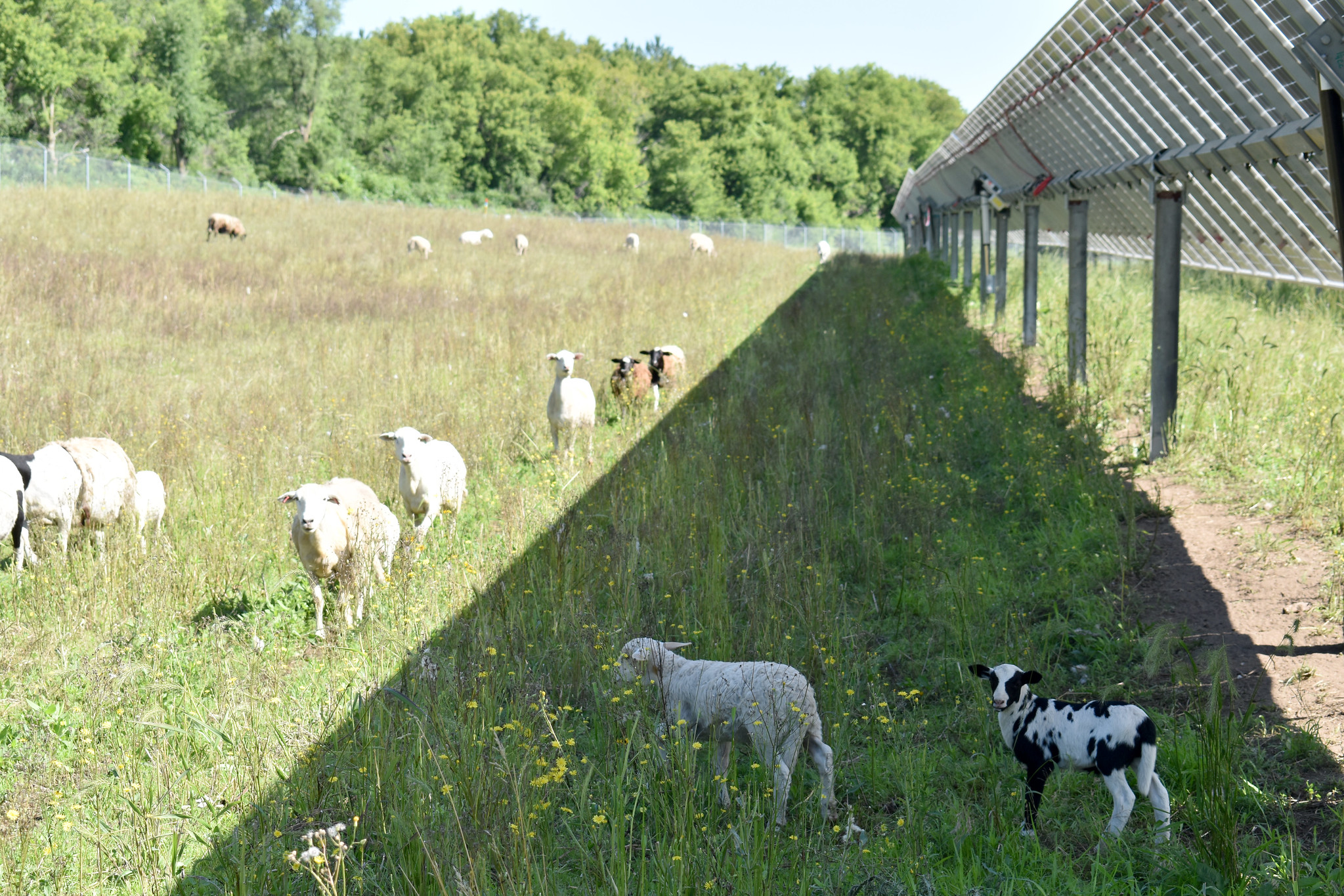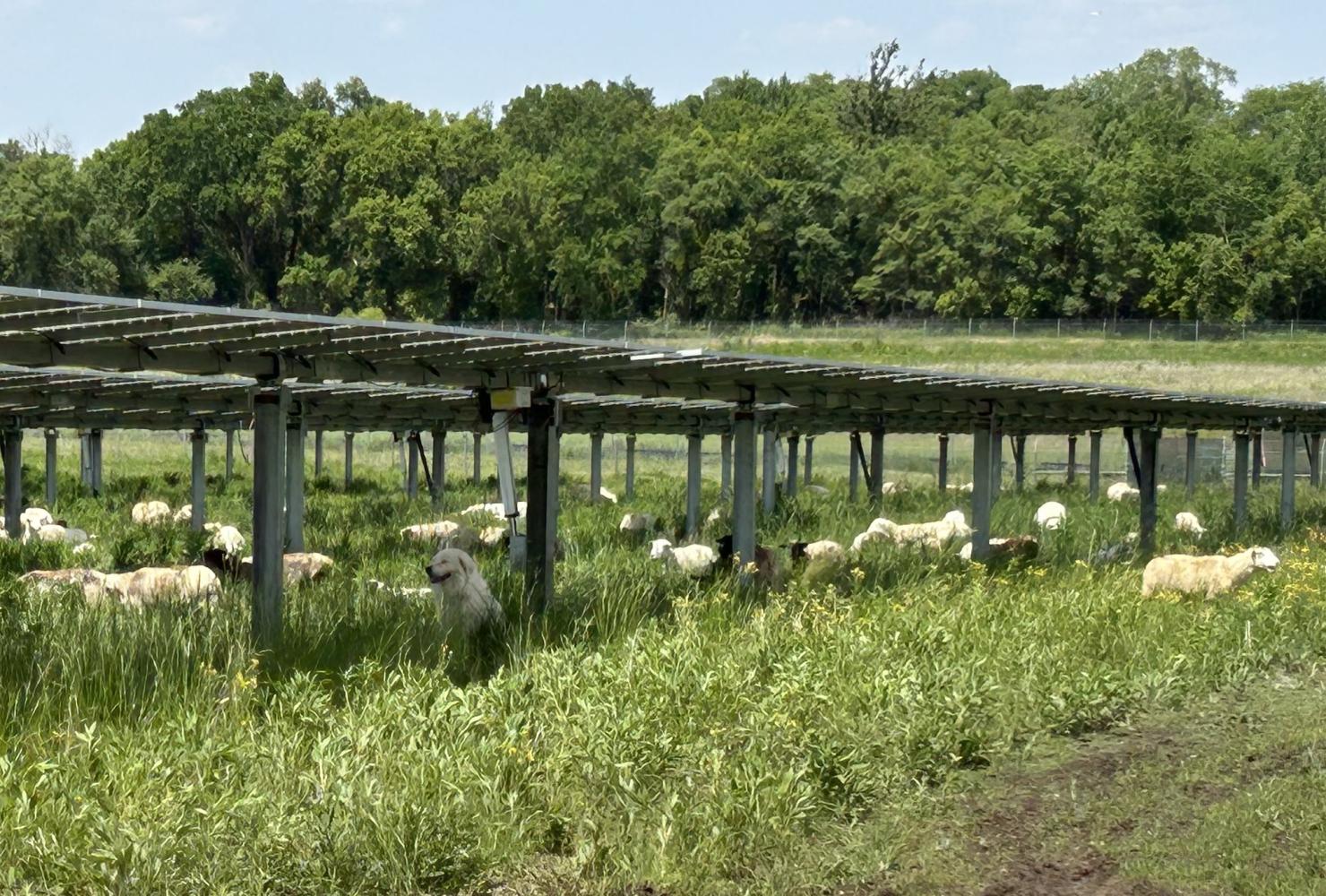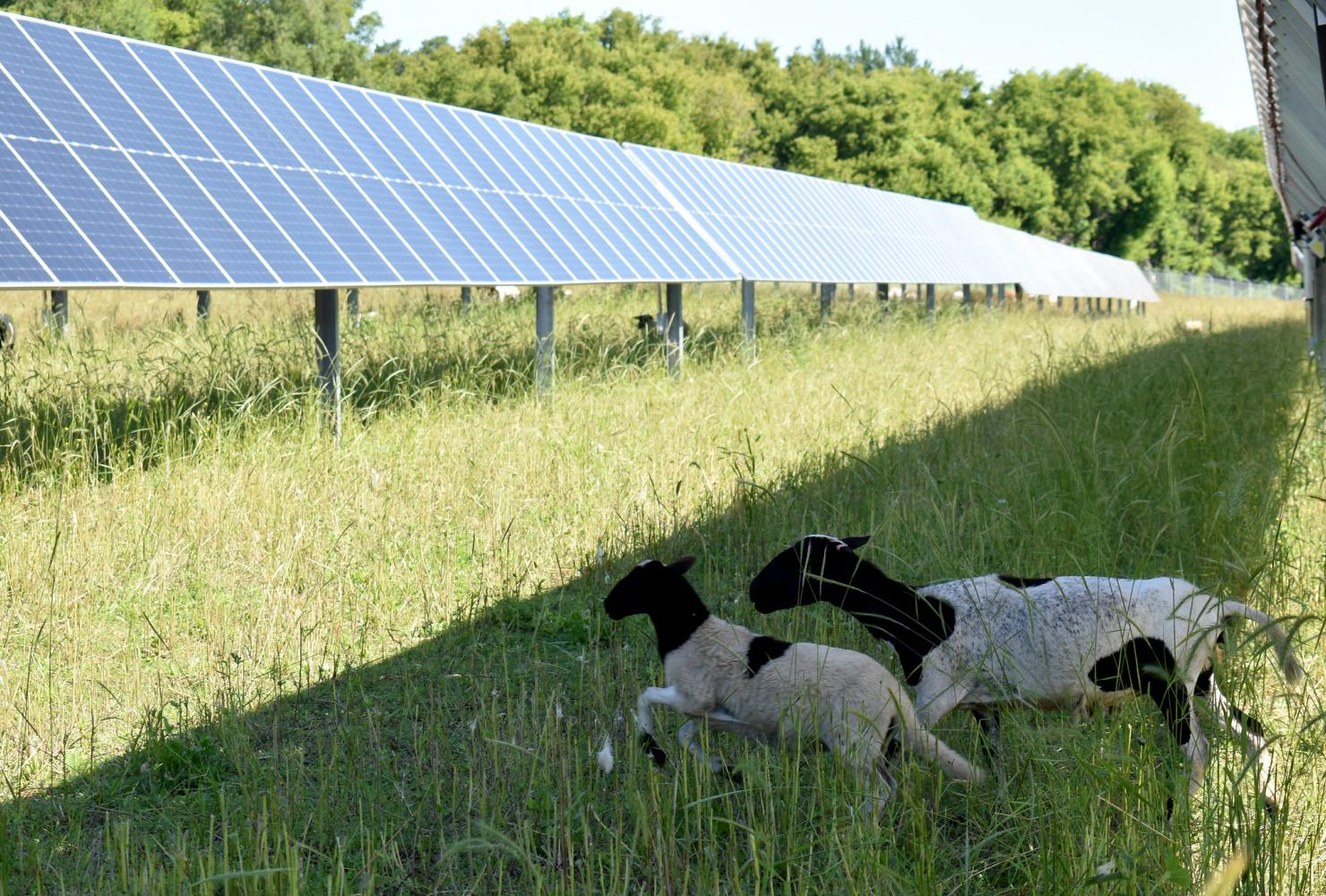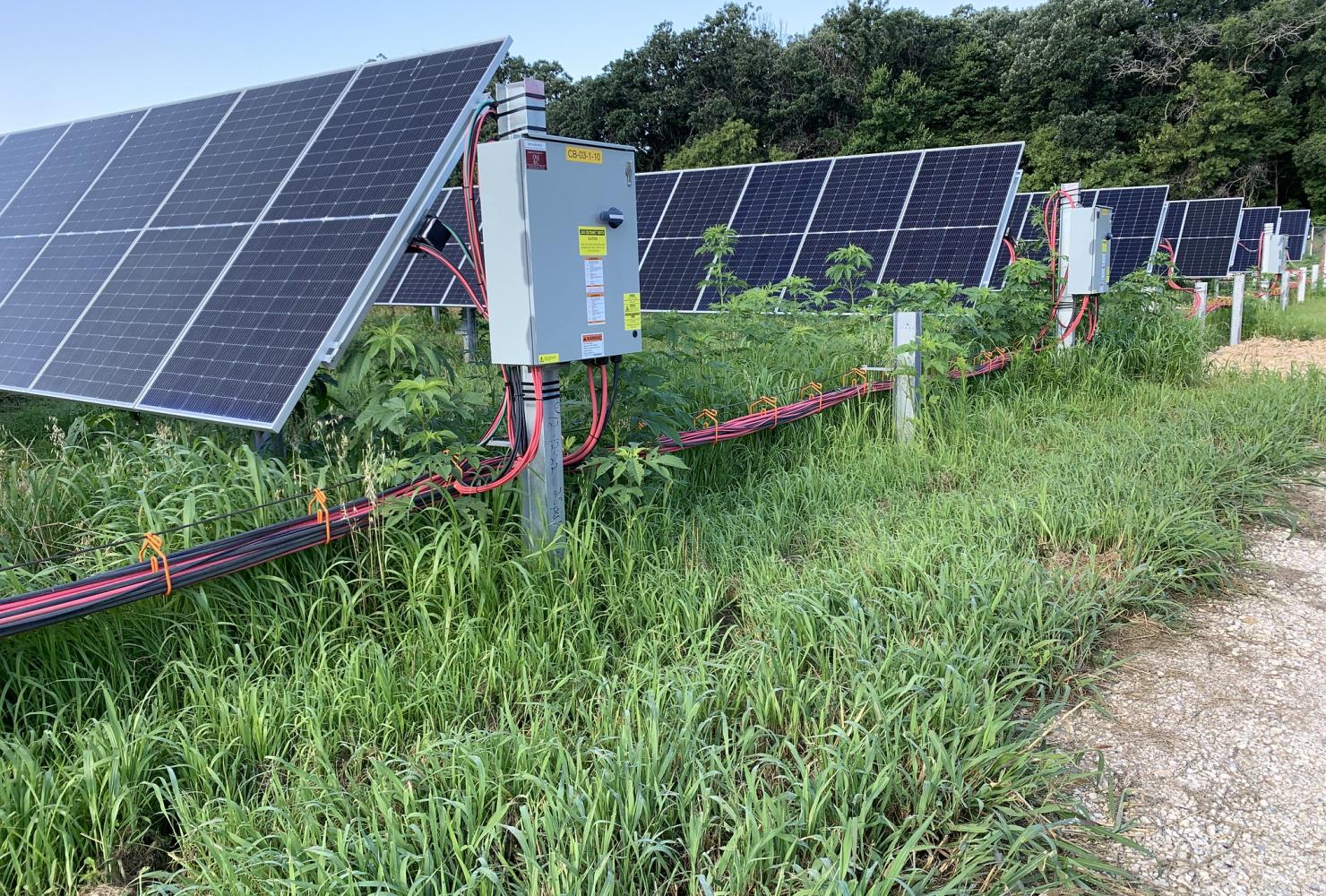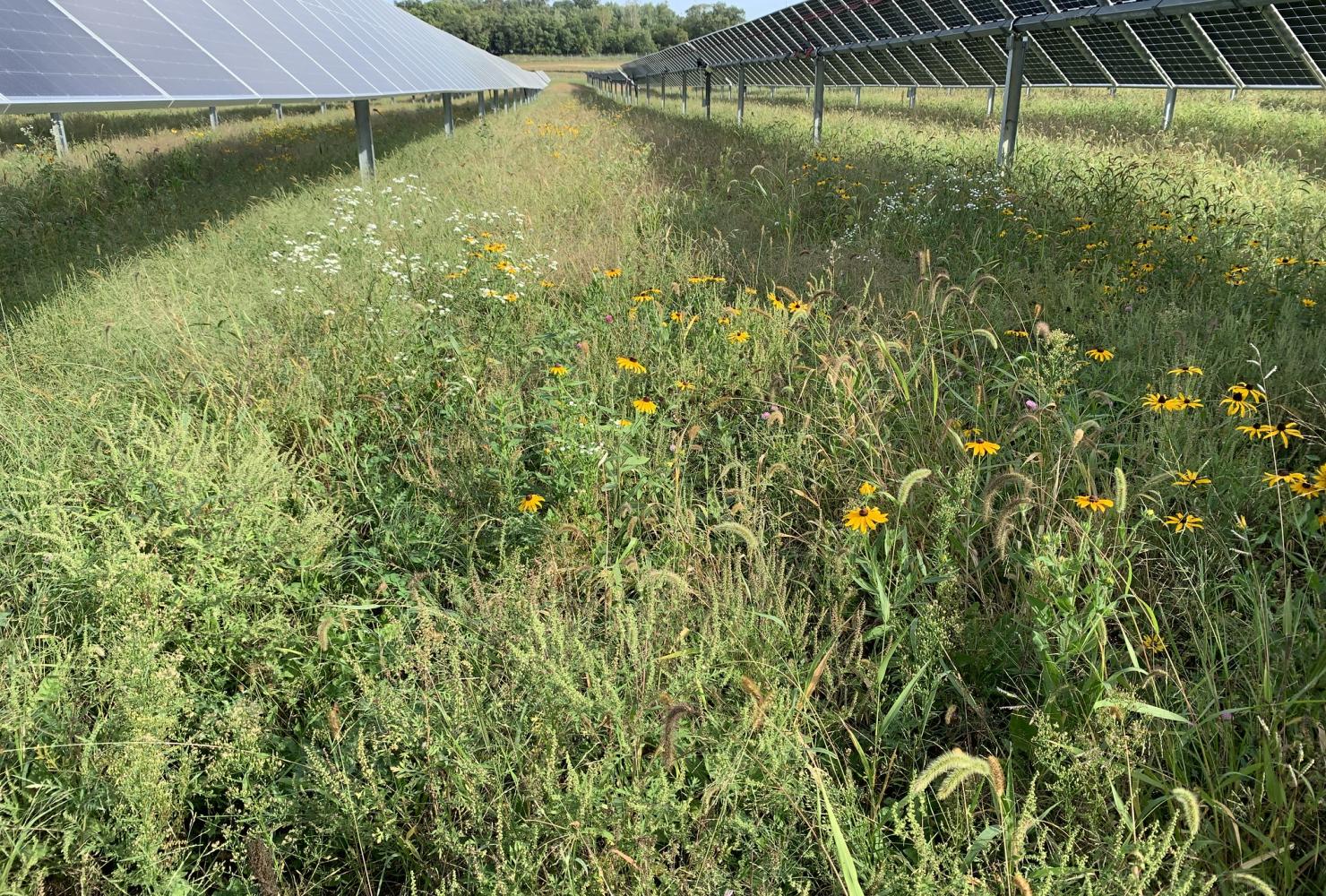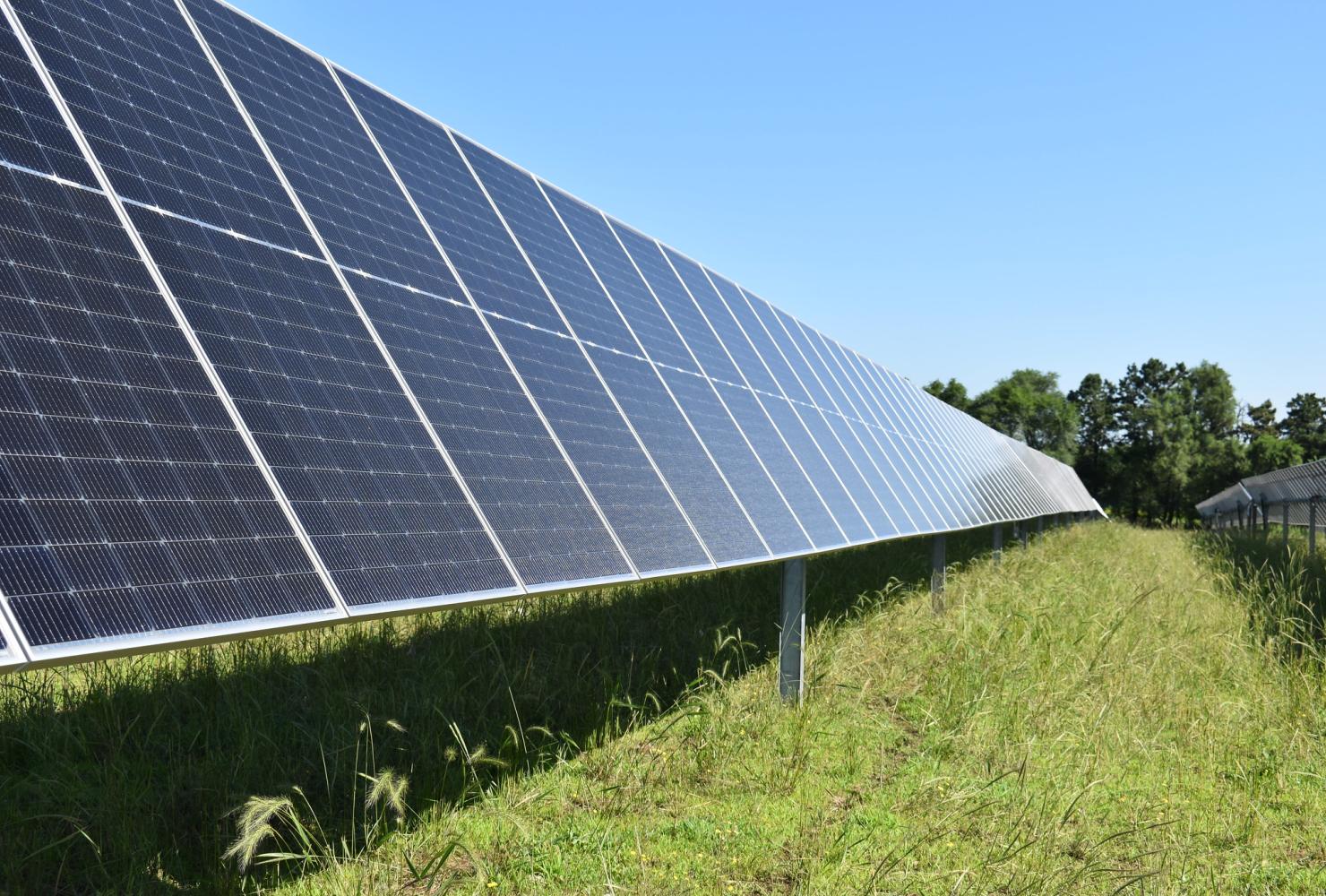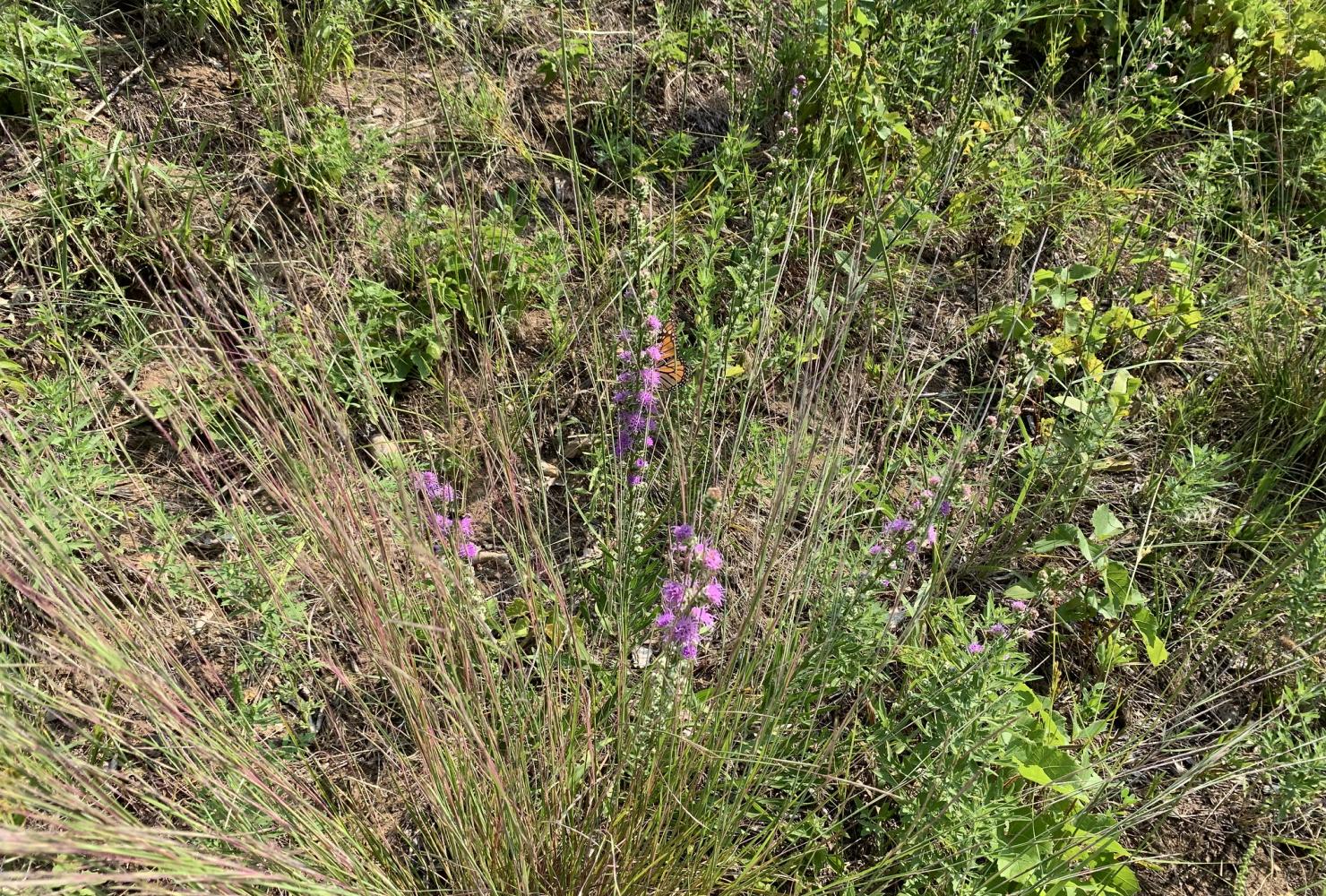Sheep graze the way for native plants at solar site
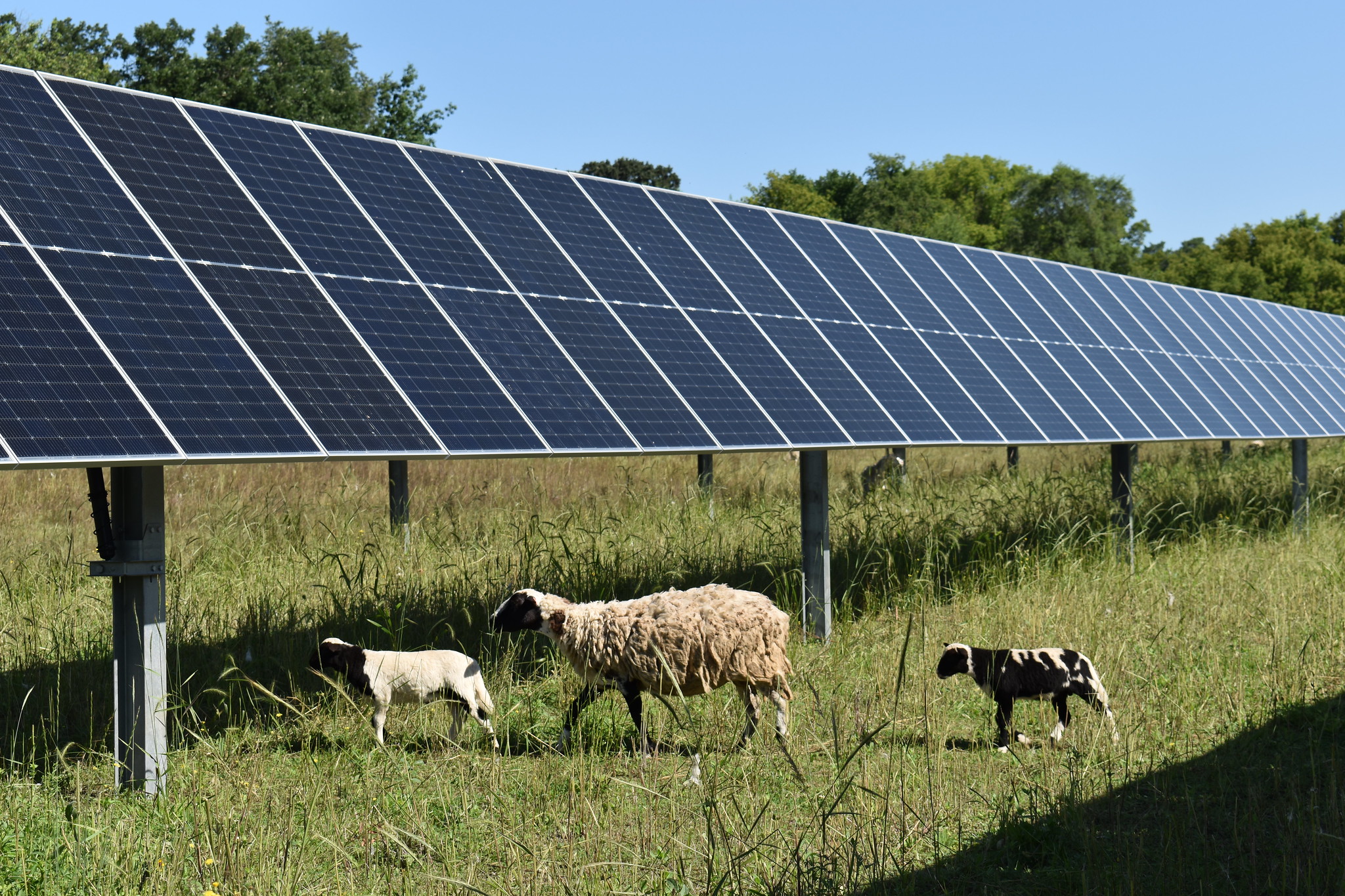
Hundreds of sheep, many with lambs at their sides, arrived to support our pollinator planting at a solar field in early June. They're grazing down weedy plants to allow more space for native plants to grow during the warmth of the growing season, when Minnesota's wildflowers thrive.
Building pollinator habitat in a solar field
FMR has been working since 2023 to create 360 acres of pollinator-supporting habitat within the new solar array site on the Flint Hills Resources property in Rosemount. This project is part of a 500-acre project to restore grasslands and woodlands surrounding the solar site.
Over the last year, we've been eagerly anticipating the emergence of our seeded grasses and wildflowers, and the arrival of bees and butterflies under the solar panels. However, as native plants establish from seed, weedy plants also germinate.
Native plants tend to dedicate more energy to below-ground growth first, followed by warm-season flowering and seeding. That gives weedy, cool-season plants an advantage. The growth of those weeds can suppress native flowers and grasses.
Typically, we reduce these weeds with mowing or even prescribed fire, but mowers and fire are not ideal tools across a vast site with complex and sensitive equipment.
Enter the solar grazers
Faced with the challenges of suppressing weeds, keeping plants out of the solar array wiring and preventing the panels from any shading, we worked with our implementation partner to find a cost-effective and efficient approach.
Sheep grazing emerged as the perfect solution! During high-intensity, short-duration grazing events — for us, that means 500 animals and 35 to 40-day stints across about 100 acres at a time — the sheep thoroughly eat down the weedy plants. They even reach under and around the solar panels and their infrastructure.
Not only do the sheep graze down weeds, they have also improved water infiltration by aerating the soil with their hooves, and their droppings have replenished organic matter in soils that were depleted by past agriculture.
Sheep don't only eat the weeds, of course. They also eat the native plants we're trying to establish. But these prairie species evolved with grazing by bison and other animals, so sheep grazing won't set them back. And because many Minnesota wildflowers flourish later in the summer, they'll make a comeback over the weedier species after the sheep move on. Steady rains this spring and warm temperatures this early summer have supported the quick growth of these native plants we hope to encourage.
What's next
The sheep aren't done for the summer. We'll rotate the sheep to another section of the site with persistent perennial weeds to continue grazing. We'll also assess how the plants have responded and adjust the timing of the grazing periods to make sure the sheep don't overgraze any of the plants we're trying to establish.
We also want the sheep to have enough to eat — plenty of forage makes for happy and healthy workers!
In August, the sheep will return to their farm in the Cannon River valley to rest for the fall and winter. Next year, we'll consider more recently seeded areas for solar grazing. As more native plants establish across the site, we'll continue to survey to find out if pollinators are finding the habitat we're creating with the help of these solar grazers.
